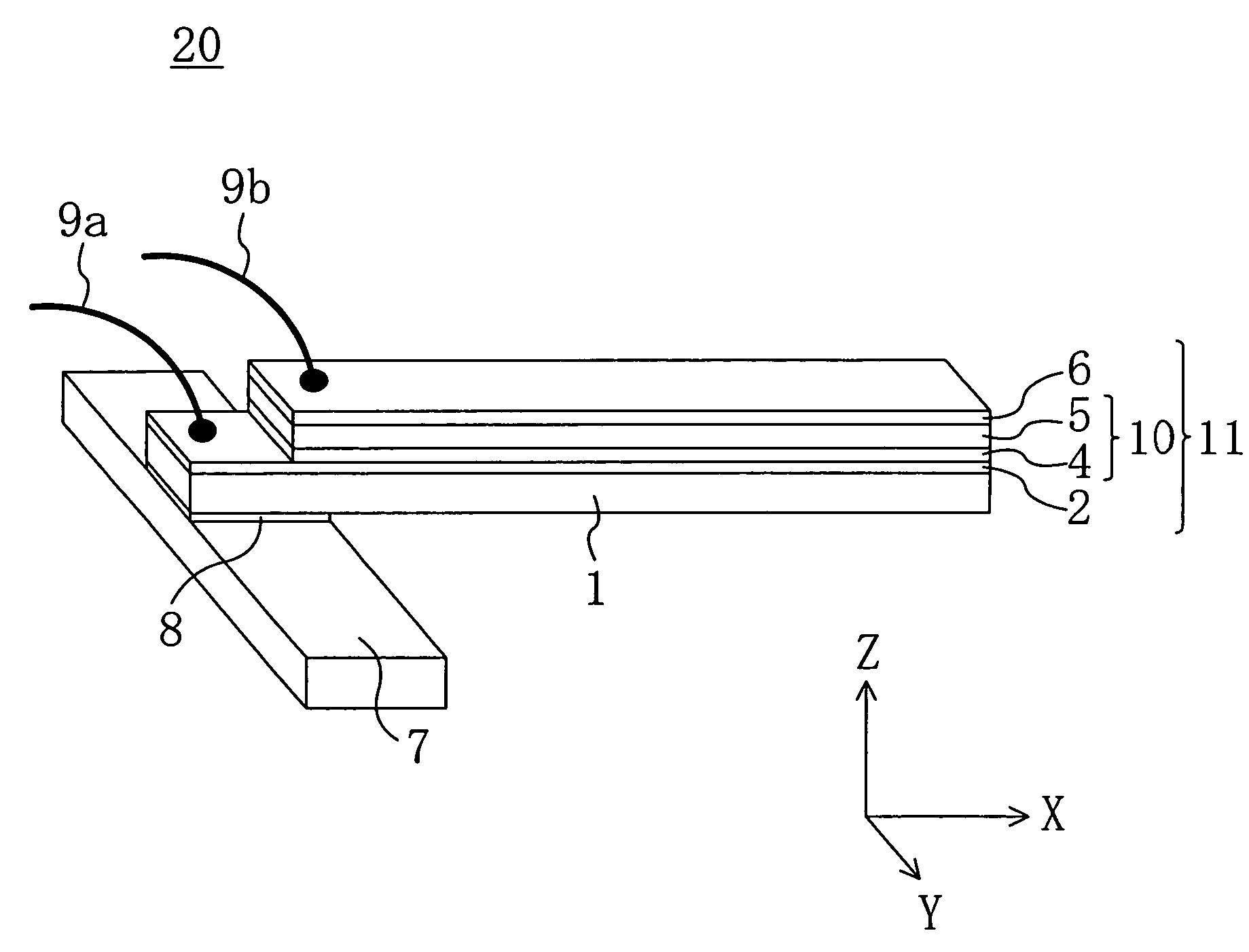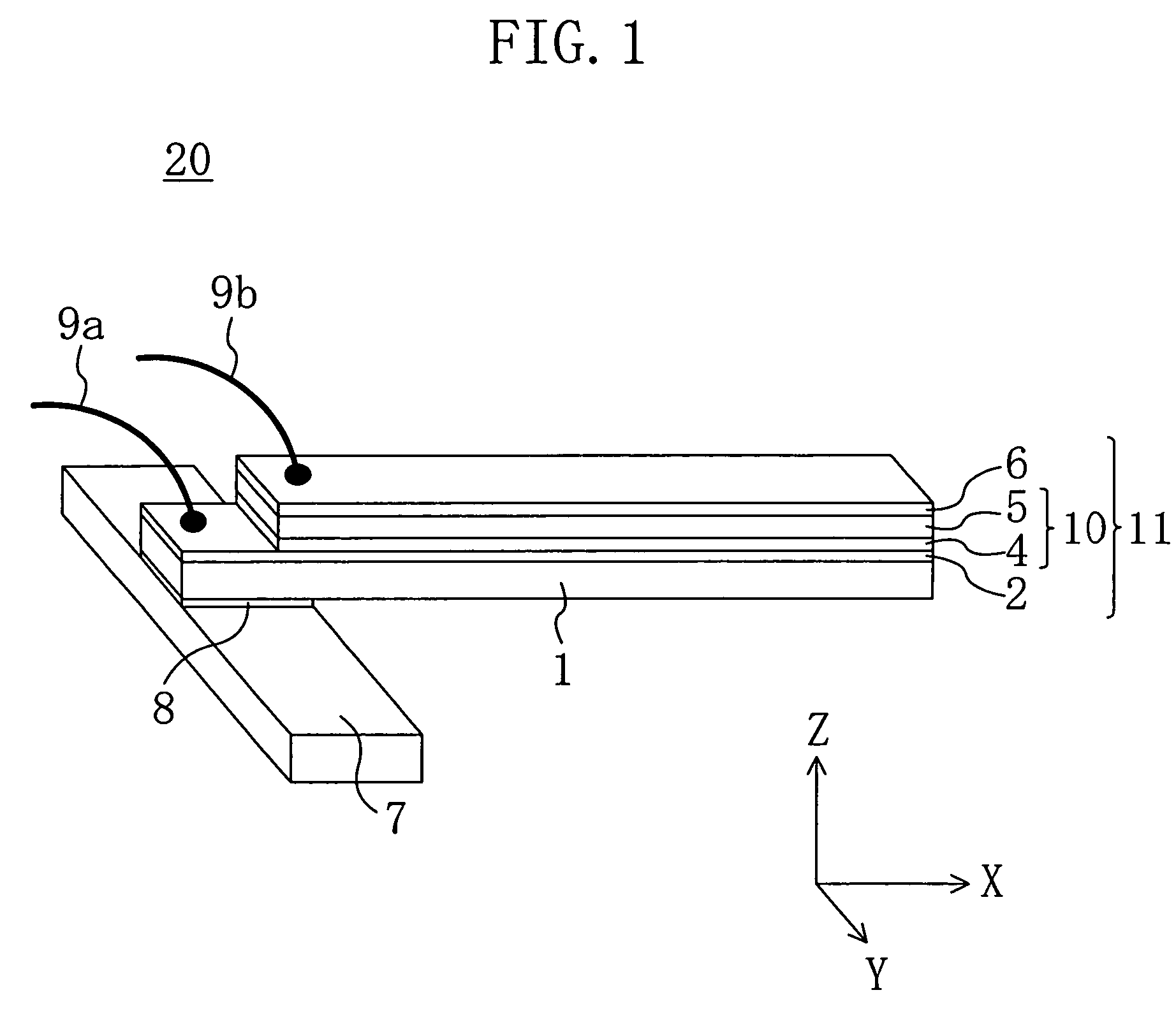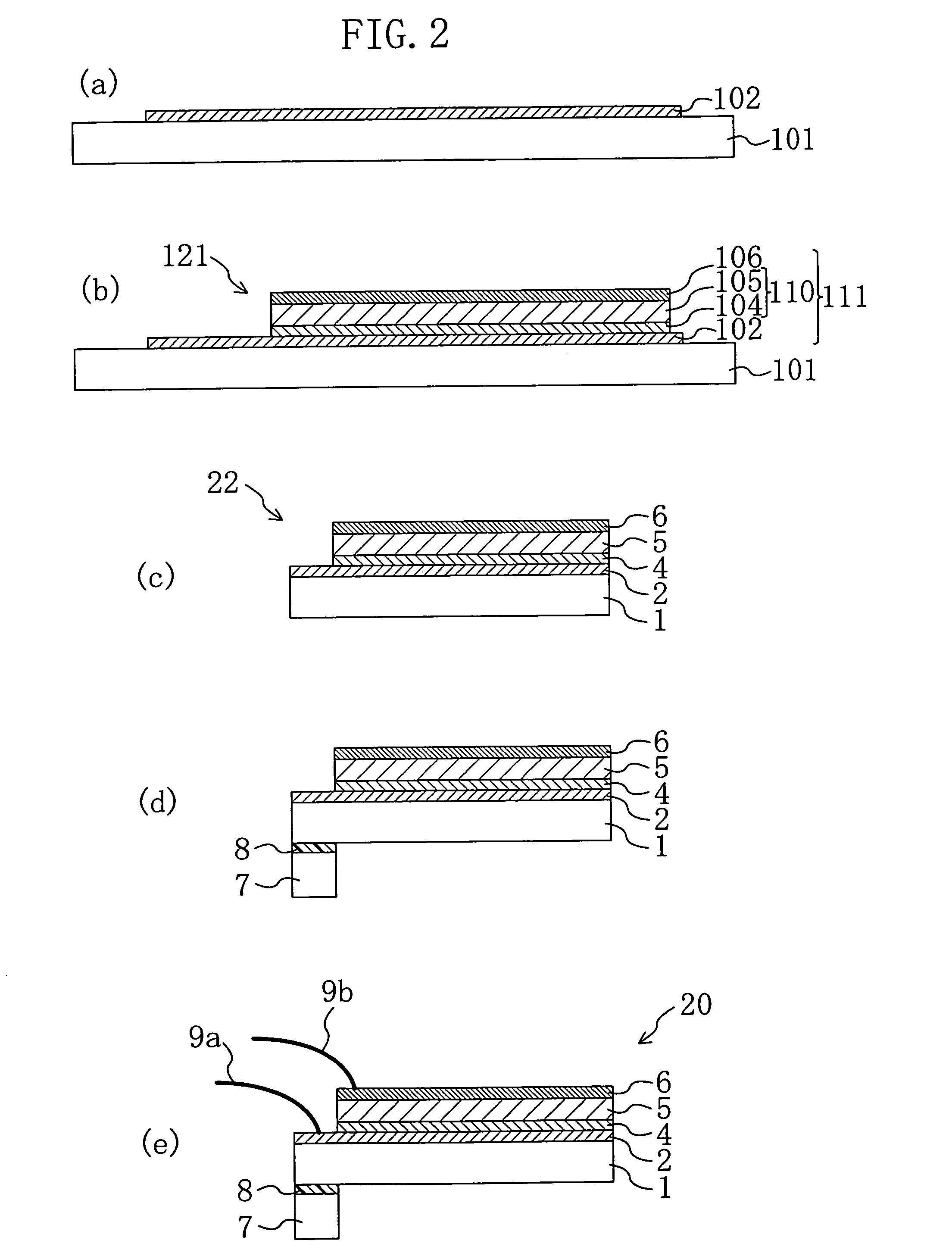Piezoelectric element, inkjet head, angular velocity sensor, methods for manufacturing them and inkjet recording device
a technology of piezoelectric element and angular velocity sensor, which is applied in the direction of device material selection, distance measurement, instruments, etc., can solve the disadvantageous limitation of monocrystalline mgo substrate material, high piezoelectric displacement property, and high durability
- Summary
- Abstract
- Description
- Claims
- Application Information
AI Technical Summary
Benefits of technology
Problems solved by technology
Method used
Image
Examples
embodiment 1
[0189]FIG. 1 is an oblique view illustrating a piezoelectric element 20 according to Embodiment 1 of the present invention. As shown in FIG. 1, the piezoelectric element 20 includes a substrate 1 which is in the form of a flat strip of 15.0 mm in length, 0.40 mm in thickness and 3.0 mm in width and a layered body 11 disposed on the substrate 1. The substrate 1 functions as a diaphragm which hinders expansion and contraction of the layered body 11 caused by the piezoelectric effect. The piezoelectric element 20 is 3.0 mm in width. An end portion of the piezoelectric element 20 having a width of 3.0 mm and a length of 3.0 mm (a left end portion in FIG. 1) is fixed onto a 1.0 mm thick support substrate 7 made of stainless steel (3.0 mm in width and 10.0 mm in length) with an epoxy-based adhesive 8. Thus, the piezoelectric element 20 is provided in the form of a cantilever.
[0190]A first electrode film 2 is provided on the substrate 1. On the surface of the first electrode film 2 except ...
example 1
[0206]Silicon was used as the substrate. A thin iridium (Ir) film having a thickness of 100 nm was used as the first electrode film. In order to form the thin iridium film, the substrate was preheated at 400° C. in a ternary RF magnetron sputtering apparatus. Then, sputtering was carried out using a gas mixture of argon and oxygen (gas volume ratio Ar:O2=15:1) as sputtering gas at a total gas pressure maintained at 0.25 Pa and a 4-inch diameter iridium target as a first target under a high frequency power of 200 W for 960 seconds.
[0207]A layered piezoelectric film was provided by forming a first thin piezoelectric film which is made of a 50 nm thick PZT film having (111) preferred orientation and a second thin piezoelectric film which is formed on the first piezoelectric film and made of a 3400 nm thick PZT film having (111) orientation. That is, the thickness of the layered piezoelectric film was 3450 nm.
[0208]The first and second thin piezoelectric films were formed using a RF mag...
example 2
[0218]High-temperature resistant Pyrex (registered trademark) glass was used as the substrate. A 150 nm thick platinum (Pt) film was used as the first electrode film. In order to form the thin platinum film, the substrate was preheated at 400° C. in a ternary RF magnetron sputtering apparatus. Then, sputtering was carried out using a gas mixture of argon and oxygen (gas volume ratio Ar:O2=15:1) as sputtering gas at a total gas pressure maintained at 0.25 Pa and a platinum target as a first target under a high frequency power of 200 W for 1080 seconds.
[0219]A layered piezoelectric film was provided by forming a first thin piezoelectric film made of a 100 nm thick PZT film having (111) preferred orientation and a second thin piezoelectric film made of a 4000 nm thick PZT film having (111) crystal orientation. That is, the thickness of the layered piezoelectric film was 4100 nm.
[0220]In the same manner as Example 1, the first and second thin piezoelectric films were formed using a RF m...
PUM
 Login to View More
Login to View More Abstract
Description
Claims
Application Information
 Login to View More
Login to View More - R&D
- Intellectual Property
- Life Sciences
- Materials
- Tech Scout
- Unparalleled Data Quality
- Higher Quality Content
- 60% Fewer Hallucinations
Browse by: Latest US Patents, China's latest patents, Technical Efficacy Thesaurus, Application Domain, Technology Topic, Popular Technical Reports.
© 2025 PatSnap. All rights reserved.Legal|Privacy policy|Modern Slavery Act Transparency Statement|Sitemap|About US| Contact US: help@patsnap.com



